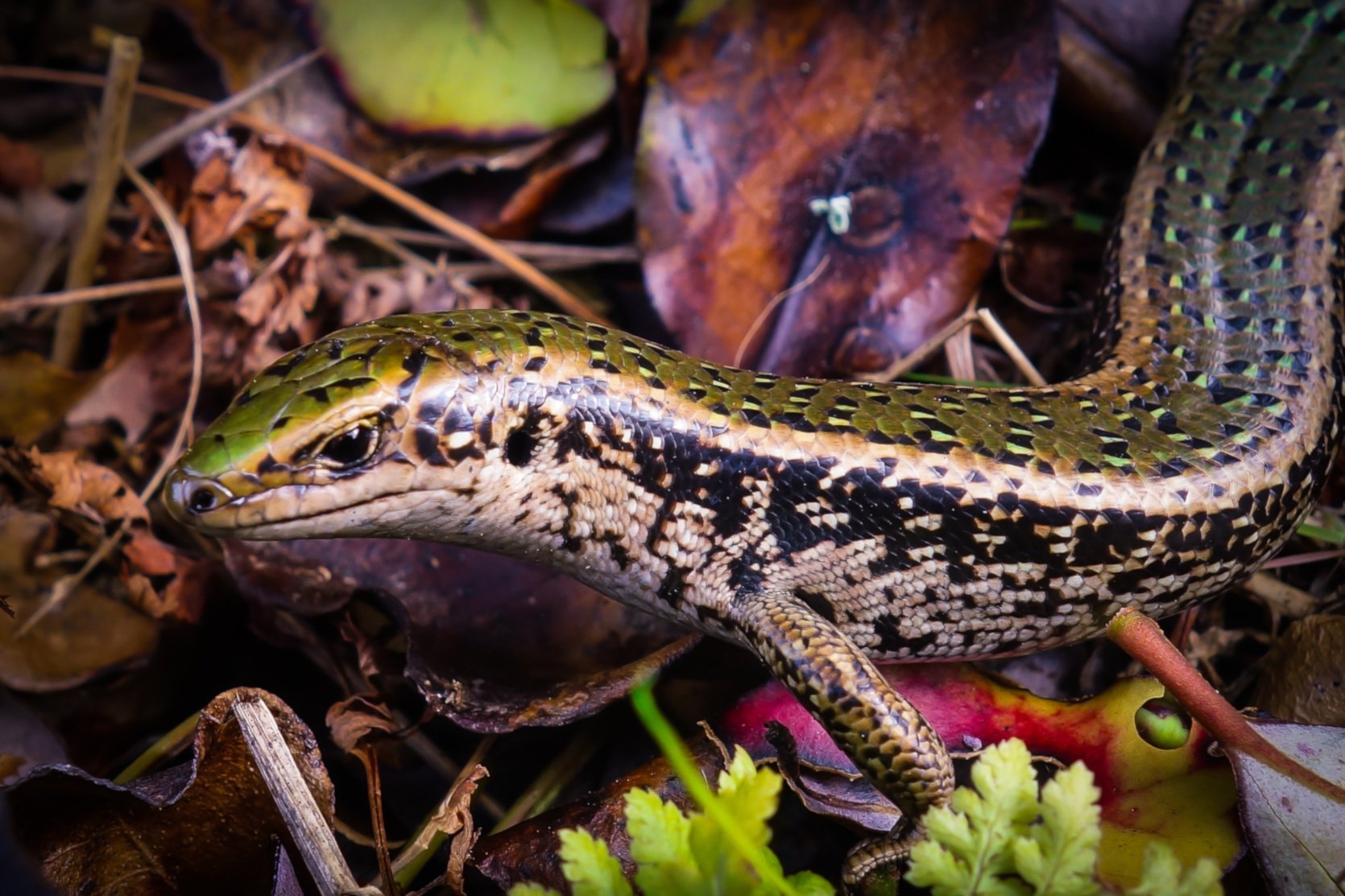
Her art project (called "Basking") was part of the Dunedin Dream Brokerage’s "Off the Ground" initiative.
"Basking" celebrates our often overlooked lizards and acquaints us with lessons we can learn from the environment.
There are more than 120 species of endemic lizards, including geckos and skinks. These native mokomoko can be found in sand dunes, grasslands, forests and alpine zones. Even though the southern grass skink (Oligosoma polychroma, clade 5) is rare, it can be found in suburban gardens.

The drawing session began at the jewelled gecko enclosure, which has extra protection from poachers. On sheets of artist paper, we were guided to do blind drawings by drawing shapes and textures without looking at the sheet.


Our decorated tiles are destined to be used in the community as places for lizards to shelter under or to bask on.
Traditionally, lizards were perceived as older siblings who held knowledge about the environment and Kelly believes we can learn much from them. Their presence may be an indication that the location is healthy, with healthy soil, abundant invertebrate life and the possibility of fruit. Their behaviour can also be an indicator of weather conditions.

There are many ways skink habitats can be cultivated in domestic gardens, such as providing refuge rocks and tangly shrubs such as small-leafed divaricating coprosmas and muehlenbeckia that lizards can shelter in.
These plants also provide berries for them to enjoy and, in return, the skinks are known to pollinate the flowers and disperse their seeds.












